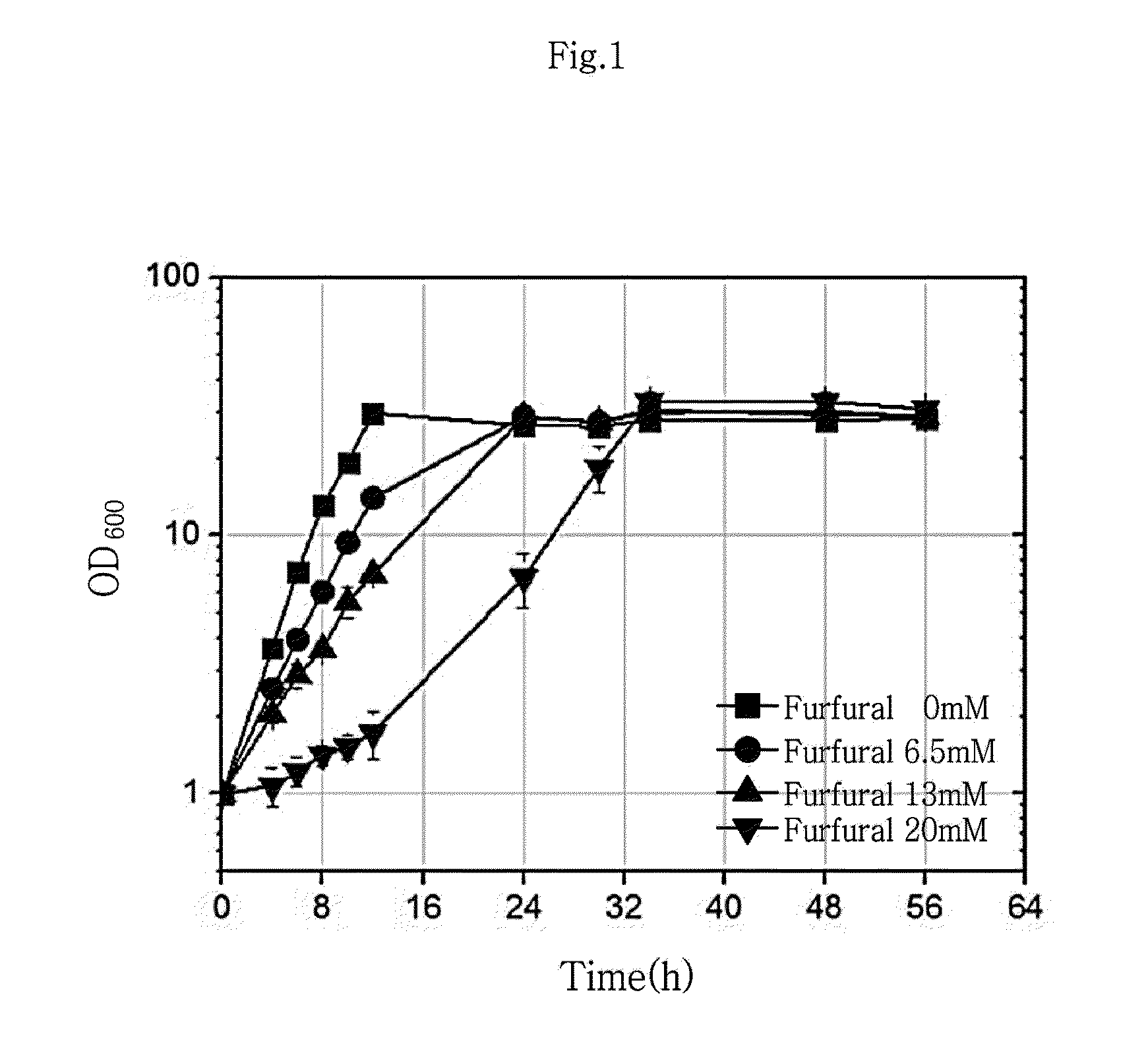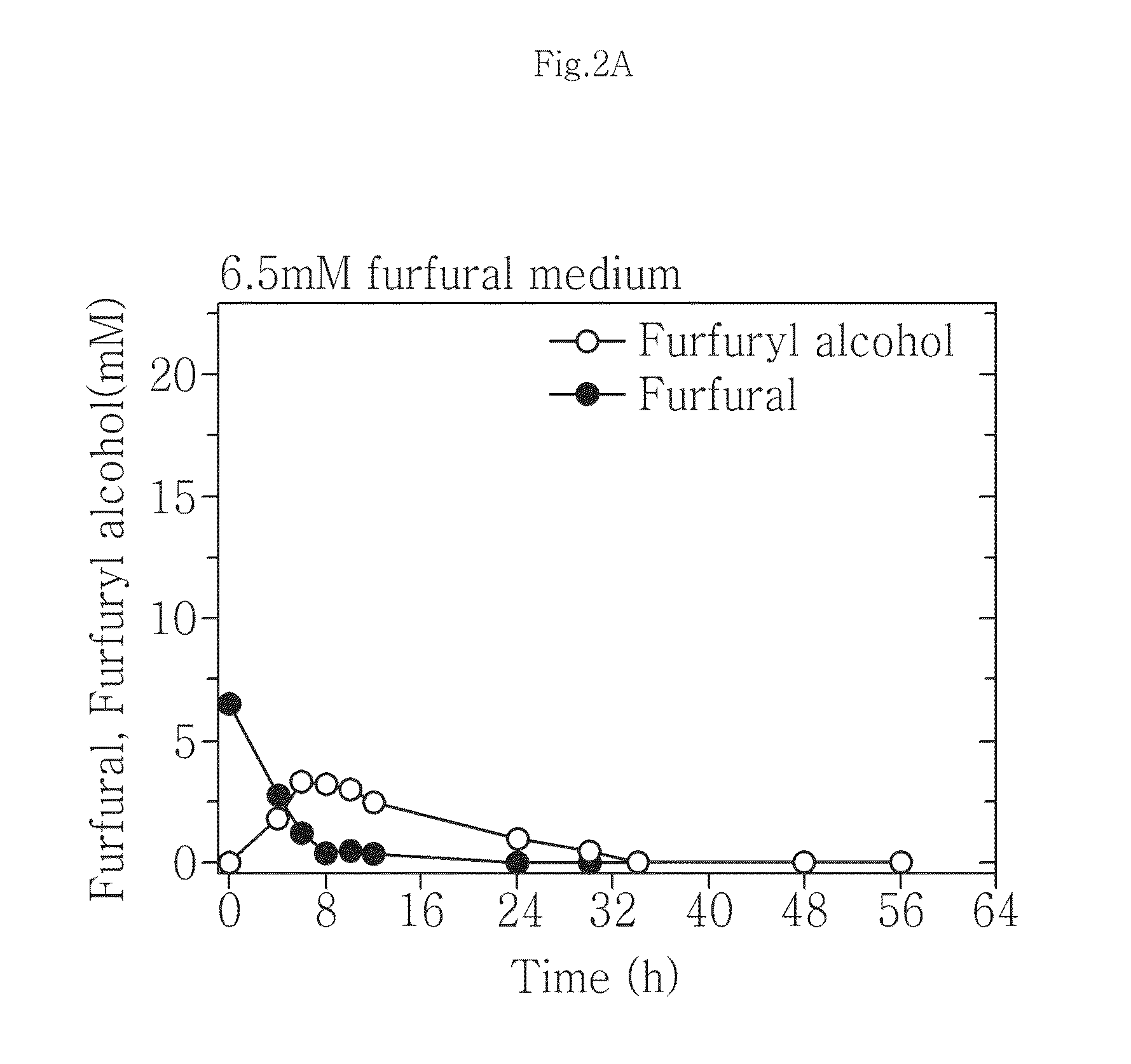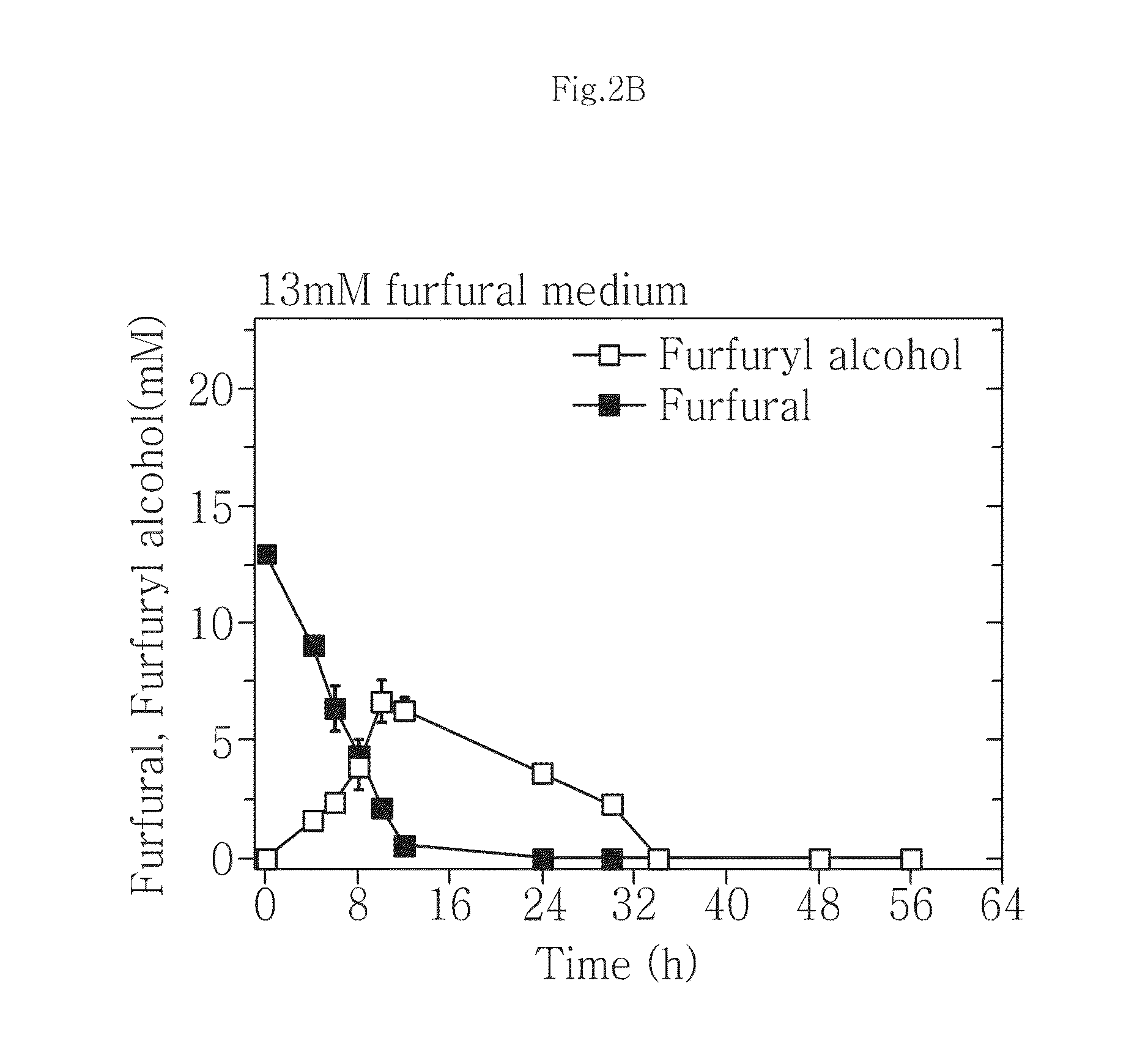Furfural-resistant gene and furfural-resistant strains comprising the same
- Summary
- Abstract
- Description
- Claims
- Application Information
AI Technical Summary
Benefits of technology
Problems solved by technology
Method used
Image
Examples
example 1
Confirm of Growth Inhibitory Effect of Furfural in Wild type
[0042]In order to develop a furfural-resistant strain, first of all, Corynebacterium glutamicum is selected as a wild type, and then, growth inhibitory effect of furfural at Corynebacterium glutamicum wild type strain (wild type), which is Corynebacterium glutamicum ATCC 13032, depending on concentration, and concentrations of furfural and furfuryl alcohol in a culture solution depending on cell growth are confirmed.
[0043]Specifically, as the culture solution, 2% glucose as a carbon source is added to a minimal medium, CGXII medium, and furfural of 6.5 mM, 13 mM and 20 mM are added thereto, respectively, to compare growth speed with the case not adding the furfural. At this time, the composition of the CGXII medium is 20 g / L (NH4)2504, 5 g / L Urea, 1 g / L KH2PO4, 1 g / L K2HPO4, 0.25 g / L MgSO4.7H2O, 42 g / L MOPS, 10 mg / L CaCl2, 0.2 mg / L Biotin, 0.03 g / L Protecatechuic acid, Trace metal (10 mg / L FeSO4.7H2O, 10 mg / L MnSO4.H2O, 1 m...
example 2
Selection of Target Gene for identifying Furfural-Resistant Gene
[0045]In order to select a target gene for identifying the furfural-resistant gene, two methods, i.e., a method of searching literatures and a method using microarray are used.
[0046]Method of Searching Literatures
[0047]Because it is confirmed that the furfural added in the medium is converted to the furfuryl alcohol in the cells in Example 1, literature search is conducted to find a furfural reductase. As a result, FucO gene as a furfural reductase using NADH in E. coli is found in [Wang, X., E. Miller, et al., 2011, “Increased furfural tolerance due to overexpression of NADH-dependent oxidoreductase FucO in Escherichia coli strains engineered for the production of ethanol and lactate.” Applied and environmental microbiology 77(15): 5132-5140]. And, in order to find similar genes with the gene in Corynebacterium glutamicum, homology search is conducted using Blastx (http: / / blast.ncbi.nlm.nih.gov / Blast.cgi). The searchin...
example 3
Confirm of Resistant Effect of Target Gens in Furfural-Containing Medium
[0054]A test for confirming resistant effect of the target genes selected in Example 2 is conducted. At this time, among the target genes of Example 2, cg3399 is excluded from this test because it is not grown after culturing in a medium containing 20 mM furfural.
[0055]Specifically, as the target genes of the present disclosure, cg0310, cg1310, cg1661 and cg3374, and b2799 (ACCESSION NP—417279, VERSION NP—417279.2 GI:345452723), which is FucO gene of E. coli K-12 MG1655 (L-1,2-propanediol oxidoreductase), as a positive control group are transformed into a wild type strain, Corynebacterium glutamicum ATCC 13032, using a Corynebacterium glutamicum expression vector, pAN6, under the conditions of 25 μF, 200Ω and 2,500 V by electroporation, respectively. As a negative control group, pAN6, which is not inserted with any other genes, is also transformed into a wild type strain with the same method. The pAN6 (Kan′) is ...
PUM
| Property | Measurement | Unit |
|---|---|---|
| Electrical resistance | aaaaa | aaaaa |
| Strain point | aaaaa | aaaaa |
| Toxicity | aaaaa | aaaaa |
Abstract
Description
Claims
Application Information
 Login to View More
Login to View More - R&D
- Intellectual Property
- Life Sciences
- Materials
- Tech Scout
- Unparalleled Data Quality
- Higher Quality Content
- 60% Fewer Hallucinations
Browse by: Latest US Patents, China's latest patents, Technical Efficacy Thesaurus, Application Domain, Technology Topic, Popular Technical Reports.
© 2025 PatSnap. All rights reserved.Legal|Privacy policy|Modern Slavery Act Transparency Statement|Sitemap|About US| Contact US: help@patsnap.com



